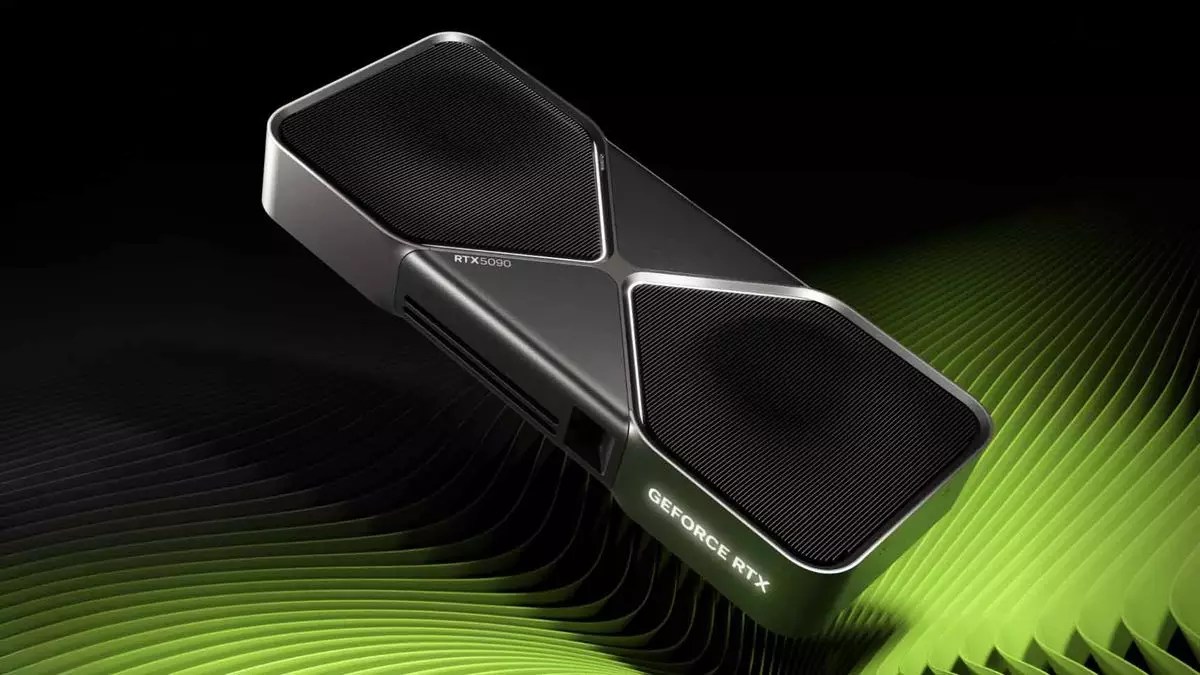The graphics card market is perpetually dynamic, with tech enthusiasts laying in wait for the next revolutionary release. Nvidia, a titan in the graphics processing unit (GPU) industry, seems to be at the center of the latest speculation with the rumored RTX 5090. Recent revelations about an engineering board with striking capabilities have sparked excitement among fans and professionals alike. This article delves into the implications of these leaks, examines Nvidia’s historical patterns in GPU releases, and considers what this means for future product announcements.
According to recent leaks, an engineering board featuring the RTX 5090 is purportedly equipped with a fully unlocked GB202 GPU showcasing a staggering 24,576 CUDA cores. This figure marks a notable increase of 13% over the expected count of 21,760 cores for the retail version. Such a leap piques interest in how high-performance gaming and computational tasks might be revolutionized. For context, the previous generation’s flagship, the RTX 4090, utilized a Graphics Processing Unit that included 16,384 CUDA cores, meaning the RTX 5090 is set to offer roughly 50% more cores—a performance enhancement enthusiasts have eagerly awaited.
This potential upgrade doesn’t just stop at CUDA cores. The leaked board reportedly features 32 Gbps GDDR7 memory, outpacing the 28 Gbps memory designated for the retail iteration of the RTX 5090. The implications of this faster memory are significant; an impressive bandwidth of 2,048 GB/s will allegedly help manage the demands of the increased CUDA cores. Such enhancements suggest that if Nvidia fully unleashes the capabilities of this engineering version, it could surpass current high-performance benchmarks in gaming and graphics rendering.
NVIDIA’s Historical Context: Unleashing Power or Holding Back?
While the staggering specifications of the RTX 5090 engineering board are noteworthy, understanding Nvidia’s history is essential to grasp the full picture. The company has consistently come under scrutiny for its decisions regarding how much power it actually allows its top-tier GPUs to utilize. A pertinent example includes the RTX 4090, which, despite having the underlying AD102 architecture capable of housing 18,432 cores, featured a restricted version. This raises questions about Nvidia’s strategy—does it strategically limit specs to maintain a competitive edge without exhausting its resources?
Following suit, the rumored prototype 4090 Ti sparks considerable discussion. Although evidence of its existence hints that Nvidia does indeed explore high-end variants, it also underscores a pattern where the company doesn’t necessarily roll out every spec it has developed. Some pundits speculate that this might be a tactical move to keep standout cards like the 4090 relevant in a market increasingly dominated by the budget-friendly AMD alternatives. Given that AMD’s RDNA 4 architecture appears focused more on the mid- to low-end segments, the pressure is diminished for Nvidia to push the 5090 to its maximum potential.
Despite the impressive hardware leaks, consumer sentiment towards the RTX 5090 has been somewhat underwhelming. Recent video analyses from prominent tech channels have expressed a range of criticisms, underscoring a trend of dissatisfaction regarding the quoted specifications. Many enthusiasts had anticipated a bolder display of capabilities from Nvidia. If the 5090 had launched alongside the full-blown version of the GB202, the narrative might have been vastly different.
Interestingly, this opens up a strategic opportunity for Nvidia. They could potentially learn from these reactions and introduce an alternative such as an RTX 5090 Ti or a premium Titan card. Unlocking the full potential of the GB202 not only aligns with consumer expectations but could also mitigate frustrations over perceived underperformance. But we must consider the economy of high-end graphics cards; price points would soar with such enhancements, which could limit broader market accessibility.
As the Nvidia RTX 5090 saga continues to unfold, the implications of the leaked specifications offer a tantalizing glimpse into what the future holds for high-performance graphics. The excitement surrounding its features is somewhat tempered by a palpable caution stemming from Nvidia’s historical restraint in unleashing power. Whether by choice or necessity, consumers are left wondering if Nvidia will pivot to meet expectations with an updated release or maintain what could very well be a conservative approach to a seemingly ultra-capable flagship.
Ultimately, as the anticipation builds, the focus remains on Nvidia’s upcoming announcements; the tech community eagerly awaits to see how the company navigates these intriguing possibilities while balancing performance, pricing, and its competitive landscape. Will Nvidia offer its best, or will it remain shrouded in speculation? Only time will tell.


Leave a Reply